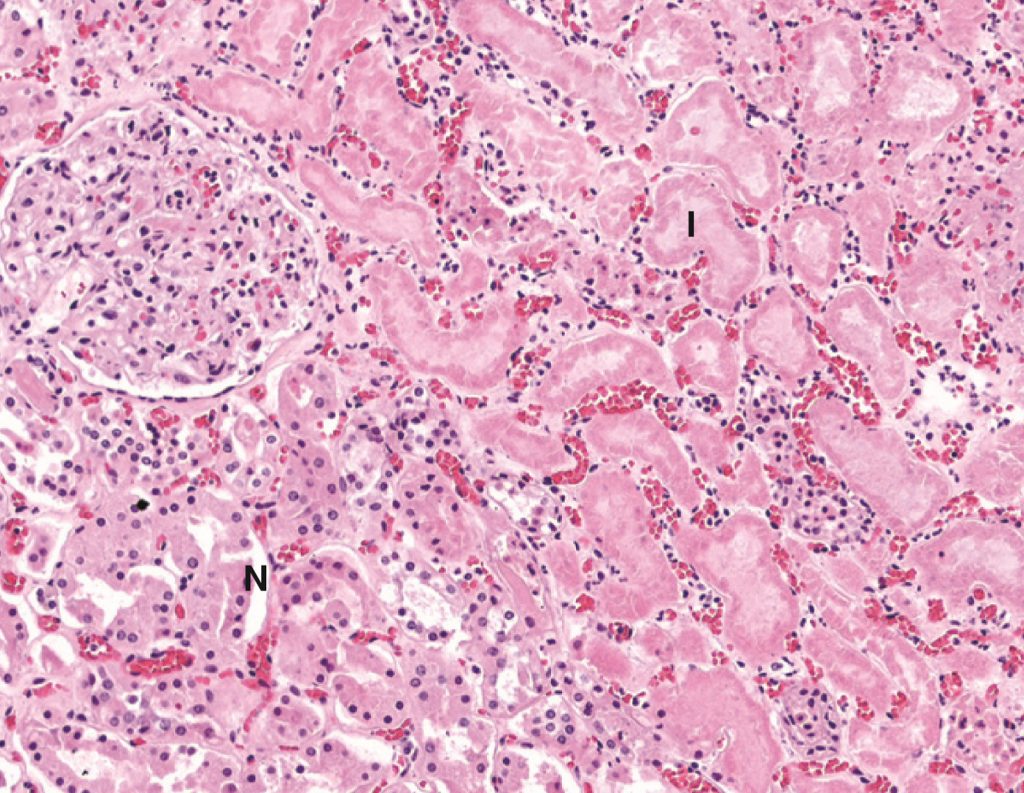Page created on September 13, 2018. Last updated on December 18, 2024 at 16:56
Necrosis
Necrosis is the “catastrophic”, “dirty” (as opposed to clean apoptosis) type of cell death, the type that happens when something goes very wrong. That “something” can be many things (see causes of cell injury in topic 2). When a cellular injury is so severe that the cell cannot recover from it, we say that the injury has reached the point of no return, and that is when the cell undergoes necrosis. We often talk about necrosis as a response to hypoxia, often because of ischemia.
Morphology
When a cell undergoes necrosis, many biochemical and molecular changes happen inside the cell (see the cell responses to injury in topic 2). The lack of ATP causes the cell to swell so much that the cell is unable to maintain the membrane integrity, causing it to burst and leak the cellular content. Lysosomal enzymes start degrading the proteins inside the cell. Macrophages will phagocytose the leaked cellular content and start to produce inflammation. While apoptosis usually happens in a few cells that are scattered in a tissue, necrosis often happens to almost all cells in a tissue at the same time, which causes the tissue to lose structure and function.
It takes time for the injury to produce any morphological changes on the cellular level. The word ultrastructure means the structure of the cell that can be seen by electron microscopy but not by light microscopy. If the injury is sudden, it can take minutes to hours from the injury until there are any ultrastructural changes that can be seen.
The light microscopy changes, the cellular changes that can be seen with a light microscope can only be seen hours to days after the injury. The gross changes (macroscopical, visible to the naked eye) can take many days to be visible. This is important to keep in mind, as any necrotic tissue won’t be visible on imagery like CT or X-ray until some days have passed.
Light microscopy changes
Necrotic cells have certain characteristics when viewed in a light microscope.
- Increased eosinophilia, visible as an increased pinkness of the tissue (in HE staining), and is due to the loss of RNA in the cytoplasm
- Nuclear changes. We usually divide the nuclear changes into three phases. The nucleus totally disappears 1-2 days after the injury, which is often seen in the light microscope.
- Karyolysis, the dissolution of the chromatin due to enzymes
- Karyopyknosis, the condensation of the remaining DNA into a small mass
- Karyorrhexis, the fragmentation of the remaining nucleus into invisible bits.
- Loss of tissue structure
